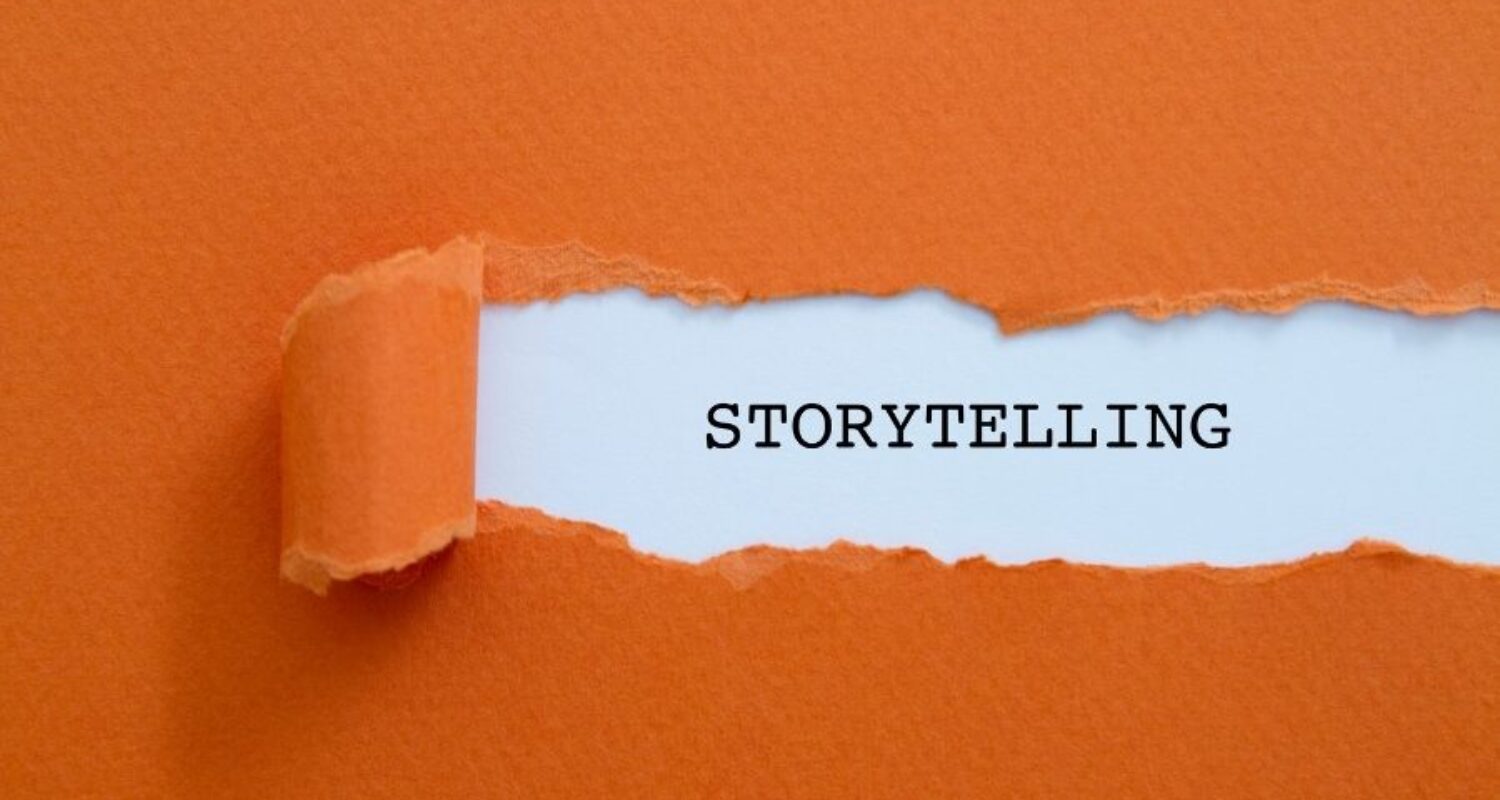In today’s busy marketing world, your brand’s story is what makes you stand out. People want real, touching stories that show more than just what you sell. They want to understand your purpose, values, and how you got to where you are now.
Finding the right mix of strategy and storytelling can be tough. How do you tell a story that connects with your audience and builds strong relationships?
Key Takeaways
- Effective brand storytelling can increase customer loyalty by up to 20%.
- Authentic, values-driven narratives can boost brand preference by 300%.
- Consistent brand stories across platforms can lead to a 25% increase in customer retention.
- Over 70% of consumers say they’re willing to pay more for products from brands with a compelling story.
- Crafting a meaningful brand story is crucial for standing out in a crowded market.

What is a Brand Story?
A brand story is a tale that tells how your company started. It shows how that story still drives your brand’s purpose and mission today. It helps your audience feel connected to your brand on a deeper level.
Imagine it as your business’s origin story – the reason behind what you do. A good brand story makes your company relatable and emotional. It’s not just about what you sell, but the values and purpose that guide you.
For instance, HubSpot’s story began with a need to change traditional marketing. They aimed to create content that solves real problems. Their focus on the customer still shapes their work today.
“Psychologist Jerome Bruner found that people are 22 times more likely to remember details when stories communicate messages rather than just facts and numbers.”
Sharing your brand’s story can create a strong bond with your audience. It sets your business apart from others. A solid brand narrative, based on your brand purpose and brand mission, is key to building loyalty and growth.
Why Brand Storytelling Matters
In today’s market, a strong brand story is crucial. It helps create a deep customer connection and builds lasting brand loyalty. When people understand your business’s purpose and values, they bond with your brand emotionally.
Good brand storytelling lets your audience see who you are and what you believe in. By sharing your struggles and how you overcame them, you gain authenticity and trust. This turns customers into loyal brand supporters.
“Businesses that effectively use brand storytelling experience up to 22 times more memorability compared to just presenting facts and statistics.”
Burt’s Bees is a great example. They’ve won hearts by focusing on the environment. Their foundation has given $5 million to green projects, showing their values and connecting with eco-conscious customers.
Nike also invests heavily in storytelling, with a $4.1 billion marketing budget. Their YouTube channel, with over 646,000 subscribers, shows the power of their stories.
Creating a meaningful, personal, and true brand story can change your customers into loyal fans. This leads to more customers staying with you, more referrals, and better profits for your business.
The Keys to a Great Brand Story
To create a brand story that connects with your audience, find the right balance. Your story should be meaningful, personal, and emotional. It also needs to be simple and authentic to your brand’s heart. When you nail this, your brand story can build a strong bond with your customers.
Meaningful, Personal, and Emotional
The best brand stories touch on universal human experiences. They show the challenges your company has overcome. This makes your story relatable and emotional. Creating a clear story with a start, middle, and end strengthens your brand’s identity. It shows why your audience should care.
Simple and Authentic
Your brand story should be both meaningful and emotional, yet simple. Don’t overwhelm your audience with too much information. Focus on what makes your brand unique and true to your brand authenticity and brand consistency. Being authentic builds trust and loyalty, so stay true to your purpose and values.
By balancing these five key elements – meaningful, personal, emotional, simple, and authentic – you can create a brand story that grabs your audience’s attention. It will make your brand stand out.
Brand Story Examples
As customer-centric marketing grows, many brands have created powerful stories. These stories highlight their purpose, values, and what makes them unique. They use conflict, status quo, and resolution to engage their audience.
Patagonia’s Worn Wear program is a great example. It shows how they give old products a new life, promoting sustainability. Unthinkable Media talks about the challenge of grabbing attention in today’s digital world. Grado Labs, a family business, focuses on sound quality, not just marketing.
These brand storytelling examples show how to share a brand’s purpose and values. By telling real, customer-focused stories, these companies stand out. They build loyal fans and strong connections with their audience.
| Brand | Brand Story Highlight | Key Takeaway |
|---|---|---|
| Patagonia | Worn Wear program gives new life to used products, promoting sustainability. | Align brand story with core values like environmental responsibility. |
| Unthinkable Media | Narrative around the need to hold audience attention in a digital landscape. | Craft a brand story that addresses a relevant industry challenge. |
| Grado Labs | Focus on sound quality over marketing hype for their audio equipment. | Emphasize brand’s unique expertise and product differentiation. |
Businesses can learn from these examples to create their own impactful stories. These stories can connect with their audience and boost customer-centric marketing.
Crafting Your Brand Narrative
Creating a strong brand story is a great way to connect with people and stand out. It’s all about three main things: showing how your company overcame challenges, using a classic story structure, and matching what makes your brand special with what your audience wants.
Uncovering Your Brand’s Conflict and Resolution
Every good story has a main problem or challenge. For your brand, this might be the issue you were created to solve. By sharing the struggles you’ve faced and won, you create a story that people can relate to. It’s also key to show the old situation before your brand changed it for the better.
- Find the big challenges your company has tackled.
- Explain how things were before your brand made a difference.
- Share how your brand fixed the problem and made things better.
Aligning with Your Audience’s Needs
The best brand stories come from really knowing your audience. Spend time learning what your customers value, believe in, and hope for. Then, tell your brand’s story in a way that speaks directly to those needs. This is where the most impactful stories are made.
- Do deep research to understand what drives and troubles your audience.
- See how your brand’s special qualities and values match what your audience wants.
- Use these insights to create a true and engaging brand narrative.
By using these brand narrative development and brand storytelling structure tips, you’ll be on your way to a brand story that grabs your audience’s attention and builds real connections with your business.
Brand Storytelling
Brand storytelling is more than just one piece of content. It’s a continuous effort across many channels. This way, brands can build deeper connections and engagement by sharing their story in various ways.
For example, Salesforce’s “The Ecopreneurs” video campaign was a huge success. It became the most-watched show on Salesforce+ streaming. The featured climate-action entrepreneurs saw their reach and fundraising efforts grow.
Purdue University also made a big impact with its marketing. Under CMO R. Ethan Braden, the university’s marketing doubled in five years. Braden was named B2C Content Marketer of the Year for 2023.
| Brand | Storytelling Technique | Impact |
|---|---|---|
| Salesforce | The Ecopreneurs video campaign | Record response from Salesforce+ streaming viewers, ranking No. 1 in average monthly views |
| Purdue University | Doubling marketing investment, reaching a larger audience | CMO R. Ethan Braden named B2C Content Marketer of the Year for 2023 |
| ServiceNow | Consistent brand storytelling | Grew to over 22,000 employees and $8.5 billion in revenue by 2023 |
| Volvo Penta | Video campaign targeting a younger audience | Collected more than 6.5 million impressions and over 725,000 ThruPlays |
ServiceNow’s consistent storytelling helped it grow to over 22,000 employees and $8.5 billion in revenue by 2023. Volvo Penta’s video campaign for a younger audience got over 6.5 million impressions and 725,000 ThruPlays. These examples show the power of using different media in multichannel brand storytelling.
“Immersion in brand storytelling helps to maximize readers’ attention by creating an emotional connection with the audience.”
Using multimedia like text, images, videos, and interactive features makes stories more engaging. Good storytelling needs a clear structure, conflict, and resolution. A great story should reflect the audience’s interests and values, making them feel like part of the story.

Defining Your Core Story
Creating a powerful brand story starts with knowing your brand’s core. This means defining your purpose, vision, mission, and values. It’s also key to understand your target audience well. Know their needs, pain points, and what moves them emotionally.
With this foundation, you can come up with stories that truly show who you are. Stories are proven to grab attention and create a bond with your audience. In fact, 90% of buyers value authenticity, but only 51% see it in brands. This shows there’s a chance to improve in making your stories more real.
Defining Your Brand’s Core Principles
Begin by clearly stating your brand’s purpose, vision, mission, and values. These principles will guide your brand story. Ask yourself:
- What drives your brand’s existence?
- What vision do you have for the future and the impact you aim to make?
- What is your mission statement and main goals?
- What values define your brand’s identity and culture?
Developing Consistent Brand Messaging
Creating consistent brand messaging is crucial for a strong brand story. Make sure your brand’s voice, tone, and style are the same everywhere. This will help your audience feel a strong connection with your brand.
Understanding Your Target Audience
Lastly, take the time to really get to know your target audience. What are their challenges, desires, and dreams? What kind of content and messages do they respond to? By matching your brand story with what your audience wants and feels, you’ll build stronger bonds and inspire action.
With a solid base of your brand’s core, consistent messaging, and deep audience knowledge, you’re ready to create a compelling brand story. Using brand storytelling can really boost your business.
Strategies for Telling Your Story
As a brand, telling your story well is key to connecting with your audience. You need to show who you are, what you do, and how you solve problems. A true and cohesive story can inspire and build a strong bond with your customers.
Showcase Your Brand Persona
Show your brand’s true self by sharing your values, purpose, and mission. Talk about your personal stories, experiences, and challenges. This lets your audience connect with you on a deeper level. Being real is important – don’t try to be someone you’re not.
Highlight Your Problem-Solving Storytelling
Show how your products or services solve problems for your audience. Use real stories and testimonials to show your impact. This makes you a trusted problem-solver and an expert in your field.
Connect with Your Audience
Make your story speak to your audience’s interests and values. Use social media to talk to your customers, listen to their feedback, and use it in your stories. This way, you build a strong bond and a loyal community.
“Storytelling can boost brand connection and trust by 4% and influence 68% of shoppers’ purchase choices. Stories resonate 12 times more than facts alone.”
By using these strategies, you can create a story that shows your brand’s unique side, problem-solving skills, and connection with your audience. True and consistent storytelling is the way to build a strong brand that your customers will love and support for the long run.
Building an Emotional Connection
In marketing and branding, emotional connection is key. 11 Creating a real bond between your brand and people can lead to loyalty and advocacy. It’s more than just being satisfied.
Emotional ties shape how customers see and act towards your brand. Brands with strong 11 emotional bonds turn happy customers into loyal and valuable ones. Think of Nike, Coca-Cola, and Apple. Their emotional connection with their audience has fueled their success and loyalty.
- Emotional connection creates preference, leading to a loyal customer base.
- Emotional connections help build brand power by evoking feelings of trust, reliability, and satisfaction.
- Understanding customer emotions, aspirations, and pain points is vital for tailoring brand messaging effectively.
Authentic storytelling is the secret to emotional connections. 11 By telling brand stories that match your audience’s values and experiences, you build empathy and belonging. Visual stories, consistent messages, and engaging characters help create these bonds.
“Effective brand stories indirectly promote the brand instead of being self-promotional. Showcasing rather than telling in brand stories enhances emotional engagement.”
Creating an emotional connection with customers is crucial for successful branding. By understanding their feelings, dreams, and experiences, you build a lasting bond. This bond goes beyond just doing business and makes your brand a trusted partner in their lives.
Conclusion
Effective brand storytelling is key for Australian businesses today. It helps us build trust and connect deeply with our audience. This leads to lasting loyalty.
The future of brand storytelling looks bright. Trends like social and environmental responsibility, immersive experiences, and personalization will shape our connections. By using tools like those from Small Biz Optimize, we can keep our stories engaging and inspiring.
Brand storytelling makes our businesses relatable and meaningful. It goes beyond just selling. By using this strategy, we can make our brands stand out, grow, and touch people’s hearts.
FAQ
What is a brand story?
A brand story is a tale that explains a company’s start and its ongoing mission. It makes the brand relatable and emotional, connecting with customers on a deeper level.
Why is a strong brand story important?
A strong brand story is key because it shows your brand’s purpose and values. When customers connect with your “why,” they become loyal and engaged.
What are the key elements of an effective brand story?
Effective brand stories have five key parts. They are meaningful, personal, emotional, simple, and authentic. These elements help the story resonate with the audience.
Can you provide examples of well-known brands with effective brand stories?
Patagonia’s Worn Wear program is a great example. Unthinkable Media and Grado Labs also have compelling stories. These brands focus on their values and quality.
How do you craft an impactful brand story?
To craft a strong brand story, start by highlighting your company’s challenges. This creates drama and an emotional journey. Then, show how you overcame these challenges.
Find where your brand’s uniqueness meets your audience’s interests. This is where your story will truly resonate.
How do you effectively tell your brand’s story?
To tell your brand’s story, focus on what will connect with your audience. Show your brand’s unique identity and the problems you solve. Create a narrative that aligns with your brand’s values.
Avoid just listing facts. Instead, craft a story that evokes emotions.
What’s the foundation for crafting an impactful brand story?
The foundation is knowing your brand’s core identity. Define your purpose, vision, mission, and values. Also, understand your audience’s needs and what they find emotional.




